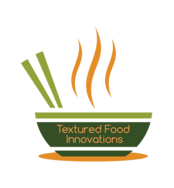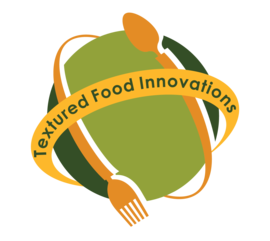 | ||||||
Before a problem with swallowing can be explained, one should have an understanding of normal swallowing (the ability to swallow easily and trouble free).
Normal swallowing, also known as deglutition, can be divided into three areas or phases as follows:
Oral Phase – In this phase, the lips, tongue and teeth are used to chew the food and move it around in the mouth to form a ball or “bolus”. Once a nicely formed bolus is formed, it is then transported or pushed to the back of the tongue and a swallow is triggered. This phase of swallowing is voluntary since the individual is controlling the food inside the oral cavity or mouth.
Pharyngeal Phase – In this phase of swallowing, the movement of the bolus is no longer voluntary. The muscles are now controlling how the bolus moves from the back of the tongue and now down the pharynx or throat. In this phase, it is important that the larynx or voice box moves upward so that the airway is closed off by a flap called the epiglottis, preventing the bolus (food) from entering the lungs.
Esophageal Phase – Once again, this phase of swallowing is involuntary because the muscles are controlling the movement of the bolus. It is during this phase of swallowing or deglutition that the bolus is propelled down into the stomach by a series of muscle contractions known as peristalsis.
What happens when this perfect synchrony of taking a sip of liquid or a bite of food is interrupted on a persistent basis?
The ability to swallow easily and safely is impaired and can now be defined as “dysphagia”.
What is dysphagia?
Dysphagia is a condition that causes an individual to experience difficulty when swallowing. There are many causes of dysphagia and symptoms can vary greatly among individuals. Symptoms of dysphagia may range from very mild to very severe. Individuals who experience difficulty swallowing may have difficulty swallowing liquids, certain types of foods, or even their own saliva. In very severe cases, dysphagia can result in a complete inability to swallow.
Difficulties with swallowing will not only impact on the ability to maintain adequate nutrition and hydration, but, can have a major impact on overall quality of life.
Dysphagia can affect individuals of all ages; ranging in age from infant to geriatric.
According to The National Foundation of Swallowing Disorders, epidemiologic studies indicate that the numbers of individuals with dysphagia may be as high as 22% of the population over the age of 50 years old.
What are the symptoms of dysphagia?
According to the American Speech-Language-Hearing Association, adults with dysphagia may present with the following signs and symptoms. Again, these signs and symptoms will vary among individuals:
• Coughing during or right after eating or drinking
• Wet or gurgly sounding voice during or after eating or drinking
• Extra effort or time needed to chew or swallow
• Food or liquid spillage from the mouth or getting stuck in the mouth
• Recurring pneumonia or chest congestion after eating
• Weight loss or dehydration from not being able to eat or drink enough
Dysphagia can put the adult individual at risk for one or more of the following:
• Dehydration
• Inadequate nutrition
• Aspiration pneumonia resulting from food or liquid entering the lungs
• Social isolation resulting from restriction of eating a variety of foods which
leads to avoidance of participation in social activities
• Fear of eating
• Emotional disturbance such as depression
What causes dysphagia?
Dysphagia itself is not a disease. Dysphagia is disorder that presents as the result of an underlying cause.
Causes of dysphagia in adults may be due to:
Aging – muscles of the mouth, throat and esophagus become weak as
an individual ages resulting in an inability to move food and liquid from the
oral cavity back to the throat, into the esophagus and finally into the stomach
Infections or irritations that obstruct or cause narrowing of the esophagus. For example, ulcers and
tumors.
Neurological conditions which affect muscle strength and coordination of the structures involved
in eating and drinking. Some of the causes may be cerebral vascular accidents (stroke),
Parkinson’s Disease, Multiple Sclerosis, Amyotropic lateral sclerosis (ALS or Lou Gerhig’s
Disease), Muscular Dystrophy, Alzheimer’s Disease, traumatic brain injury, and brain tumors.
Reflux
Pulmonary/respiratory disorders
Head and neck cancer
Individuals who have been diagnosed with dysphagia will most likely require diet modification. Modification of diet will be made based on severity of the swallowing difficulties that the individual is experiencing, and according to their risk for aspiration.
Following the completion and interpretation of a series of diagnostic assessments, it is the job of the speech-language pathologist to determine the level of diet modification that will provide safe and nutritious food consistencies for an individual experiencing dysphagia.
The International Dysphagia Diet Standardization Initiative (IDDSI) is the global standard for the preparation of modified textured foods for those individuals with dysphagia. Speech pathologists with expertise in treating individuals with dysphagia adhere to these guidelines when recommending a modified dysphagia diet. The levels included in the International Dysphagia Diet Standardization Initiative (IDDSI) consist of a continuum of 8 levels (0-7), where drinks are measured from Levels 0-4, while foods are measured from Levels 3-7.
Textured Food Innovations products are food related and therefore the levels for food will be described as follows:
Level 4 - Pureed - Is usually eaten with a spoon (fork is possible), has no lumps, and does not require chewing
Level 5 - Minced and Moist - Can be eaten with a fork or spoon, can be scooped and shaped on a plate, is soft and moist and small lumps may be visible in the food
Level 6 - Soft and Bite Sized - Can be eaten with a fork or spoon, chewing is required before swallowing, texture is soft, tender and moist and size of each piece is no larger than 1.5cm x 1.5cm uniformly prepared.
Level 7 - Regular Easy Chew - This level is normal, everyday foods of soft/tender texture. Food size is not restricted and may be smaller or larger than 1.5cm x 1.5cm. Foods should not be hard, tough, chewy, be fibrous or stringy or contain seeds, bones or gristle. It is recommended that the individual consuming this level be able to remove bone, gristle or other hard pieces from their mouth before swallowing without the help or direction from others. Level 7 is considered easy to chew regular food with some modifications to ensure safe swallowing for those with dysphagia.
Individuals diagnosed with dysphagia experience changes in diet, as well as changes in lifestyle. The act of eating is not only for nutritional purposes, but plays an important role in many aspects of a person’s life. Social gatherings for special events such as birthdays, weddings and holidays are usually centered around delicious meals. Individuals with dysphagia will often avoid social gatherings because they are limited in what they can now eat. This restriction may ultimately impact on the individual’s emotional and social well- being and cause avoidance of participation in many social activities and events.
The team at Textured Food Innovations recognized that people with dysphagia deserve food that is visually appealing and tastes delicious even though their diet now requires modification. Therefore, we have developed a menu of pureed meals that look and taste fantastic. Our culinary trained chefs use the same ingredients that are included in regular food. They then uniquely modify it to a pureed consistency while maintaining the look of regular food.
Our talented team will be happy to create a menu which includes a variety of pureed meals just for you.
So give us a call at (844) TEXFOOD and start enjoying your food once again
Dysphagia
Serving Long Island - Nassau & Suffolk Counties, New York City & The Boroughs
Call (516) 731-FOOD
Toll Free (844) TEX-FOOD
Textured Food Innovations
Easy Edible Textures
We invite you to join our Facebook group - Dysphagia Chat. We share ideas and thoughts about life with dysphagia and how to make meal time enjoyable once again. Click here to join our group.









